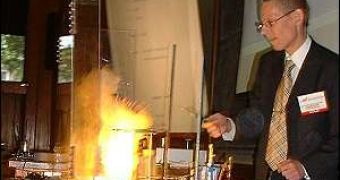TNT is the abbreviation for Trinitrotoluene, a highly explosive chemical compound, best known for its convenient handling properties. Its explosive yield is considered the standard measure of strength of bombs and other explosives.
It is a common misconception that TNT and dynamite are the same applications, or that dynamite contains TNT. In fact, whereas TNT is a specific chemical compound, dynamite is an absorbent mixture soaked in nitroglycerin that is compressed into a cylindrical shape and wrapped in paper.
TNT is synthesized in a two-step process. First, toluene is nitrated with a mixture of sulfuric and nitric acid to produce mono- and dinitrotoluene. Next, the mixture of mono- and dinitrotoluene is further nitrated with a mixture of nitric acid and oleum, a more potent nitration recipe. The waste acid from this second step can be recycled for use in the first.
Now, a team of scientists produced a new explosive, highly sensitive to shock and friction, with a high risk of unexpected detonations. Thomas M. Klap?tke, head of the Chemistry and Biochemistry Institute at Munich University, Germany, and his colleagues, developed the compound, which is a new chemical analogue, or variant, of two common high explosives in which carbon atoms have been replaced by atoms of silicon, the element in ordinary beach sand.
The combination of these compounds exhibits an extreme sensitivity, a really unexpected consequence that the researchers were not able to foresee and which allows only a limited number of tests to be performed before samples explode.
To get an idea of the instability of the compound, you may want to know than one sample exploded when touched gently with a small plastic laboratory spatula and another while being under the microscope, making this silicon analogue 3 times more sensitive than its already unstable parent compound.
"...[It is] one of the most dangerous materials, and tends to explode on the slightest impact," said Klap?tke.

 14 DAY TRIAL //
14 DAY TRIAL //